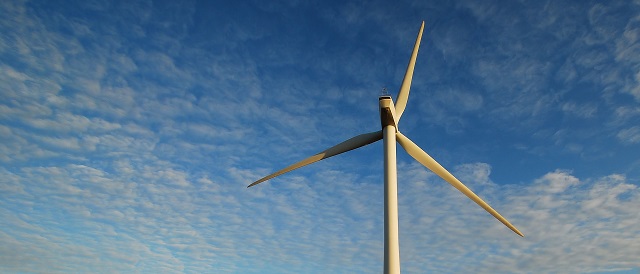Energy
Biden Admin Energy Policies Putting Americans Further At Risk In Potential War With China, Analysis Finds

 From the Daily Caller News Foundation
From the Daily Caller News Foundation
By NICK POPE
The environmental, social and corporate governance (ESG) movement is undermining U.S. energy security by artificially sapping demand for new refining projects, even though demand for fossil fuels and petrochemicals remains strong and could grow stronger in the event of a prolonged military conflict.
America’s energy systems and infrastructure may be currently unprepared to sustain a wartime economy in the event of a hot war with China, thanks in part to the Biden administration’s green policies, according to a new report published by the Heritage Foundation.
The report, published Thursday and titled “Chinese Handcuffs: Don’t Allow the U.S. Military to Be Hooked on Green Energy from China,” examines the state of American energy security and resilience in a potential war with China, taking stock of markets at home and overseas. The paper emphasizes the need for American policymakers to get ahead of any possible conflict with China by ensuring that the U.S. military has a robust and secure supply of traditional energy available, rolling back certain environmental regulations and targets pushed by the Biden administration, building more strategic energy infrastructure and bolstering existing commercial relationships with friendly countries, all of which may heighten deterrence with an adversarial country considering escalation with the U.S.
“Due to a heavy reliance on foreign sources, poor policy choices, and constraints on the transport of fuels, the U.S. military could be vulnerable,” the report states. “The risk is for localized fuel shortages, global supply disruptions, and Chinese economic coercion during a conflict driving significantly increased energy demands.”
Brent Sadler, the report’s author and a 26-year U.S. Navy veteran who now works as a senior research fellow for naval warfare and advanced technology at the Heritage Foundation, further emphasized that while steps to heighten America’s energy security will be expensive and require political will, they are necessary measures to ensure that the U.S. can transition to and sustain a wartime footing against near-peer competitors like China. Numerous pundits and ex-military personnel have suggested that China is getting ready for a war to start in the coming years, whether in Taiwan or in the South China Sea.
“America’s energy network is brittle in some regions and unable to adjust easily to surges in demand,” the report states. “In wartime, the consequences of such weaknesses could be an inability to sustain military combat operations and the inability of wartime industry to keep America safe. On the other hand, readiness for this possibility could be a significant advantage, enabling the United States to deter China by confronting it with a foe that is able to wage a prolonged war backed by a resilient wartime economy.”
The insistence of some federal and state officials — particularly Democrats — on transitioning the American economy to reliance on green energy poses a major problem for American security, the report asserts. Additionally, the environmental, social and corporate governance (ESG) movement is undermining U.S. energy security by artificially sapping demand for new refining projects, even though demand for fossil fuels and petrochemicals remains strong and could grow stronger in the event of a prolonged military conflict.
The Biden administration has pledged to invest at least $1 trillion over the next decade to advance its massive climate agenda, and federal agencies have pushed stringent regulations and taken other bureaucratic actions targeting the broader American energy sector. The administration is also looking to make the military a more climate-friendly organization, including by seeking to have the Department of Defense (DOD) transition its non-tactical vehicle fleet to electric models by 2030.
Additionally, the supply chains for many of the green energy technologies favored by the Biden administration are dominated by China, the report points out. Numerous energy and national security experts have highlighted that retiring existing energy infrastructure in favor of products reliant on China-dominated supply chains is likely to make America more vulnerable, particularly in the event of an acute geopolitical crisis.
One specific element of the American energy system in need of change is the Strategic Petroleum Reserve (SPR), a de facto emergency supply of oil stored in underground caverns along the Gulf Coast established in the 1970s amid an energy crisis, according to the report. Sadler recommends that policymakers begin to treat the SPR as a key tool for the military to use in the event of war, given China’s rise, as well as improving energy transportation infrastructure to more easily get SPR supply to coastal regions where the military can use it expediently.
The Biden administration has used the SPR as a tool for manipulating markets, as officials decided to release approximately 180 million barrels from the stockpile to bring down spiking energy costs ahead of the 2022 midterm elections. Several million of those barrels were sold to Chinese entities, and the administration has subsequently floated the possibility of again tapping into the SPR ahead of the pivotal 2024 elections while the reserve remains at its lowest levels in about 40 years, according to the U.S. Energy Information Administration.
Stadler calculated that the SPR’s current inventory would need a boost of about 55 million more barrels in order to single-handedly supply the amount of oil that U.S. forces used in Operation Desert Storm in 1990.
Deliberate policy choices and infrastructure upgrades are needed to make sure that the U.S. is able to effectively fight China in a prolonged conflict, Stadler contends in the report. Making these adjustments would help to provide an advantage over potential adversaries like China that rely on energy imports, according to Stadler.
Beyond SPR-related adjustments, the report also identifies an urgent need to unleash refiners and build out more pipeline capacity in light of China’s possible ability to launch highly disruptive cyber attacks against key pipeline and shipping infrastructure.
Additionally, Stadler emphasizes the importance of strengthening relationships with energy-rich countries that could be key sources of energy for American forces around the world in the event of a hot war with China. While several memoranda of understanding are in place with such countries, Stadler suggests that U.S. officials should move to elevate these agreements to treaty status to enhance America’s standing with those countries and decrease China’s ability to pressure third-party countries against assisting American forces.
“This is especially true for scenarios in which a major war disrupts overseas energy markets and normal shipping methods. Under such conditions, the U.S. will need more diverse and reliable overseas suppliers for military operations,” the report states. “Given the global impact that a war with China would have, the U.S. urgently needs to ensure that it has enough fuel stocks and crude oil to allow it time to adjust to a wartime footing.”
Neither the White House nor DOD responded immediately to requests for comment.
Business
Natural gas pipeline ownership spreads across 36 First Nations in B.C.

Chief David Jimmie is president of Stonlasec8 and Chief of Squiala First Nation in B.C. He also chairs the Western Indigenous Pipeline Group. Photo courtesy Western Indigenous Pipeline Group
From the Canadian Energy Centre
Stonlasec8 agreement is Canada’s first federal Indigenous loan guarantee
The first federally backed Indigenous loan guarantee paves the way for increased prosperity for 36 First Nations communities in British Columbia.
In May, Canada Development Investment Corporation (CDEV) announced a $400 million backstop for the consortium to jointly purchase 12.5 per cent ownership of Enbridge’s Westcoast natural gas pipeline system for $712 million.
In the works for two years, the deal redefines long-standing relationships around a pipeline that has been in operation for generations.
“For 65 years, there’s never been an opportunity or a conversation about participating in an asset that’s come through the territory,” said Chief David Jimmie of the Squiala First Nation near Vancouver, B.C.
“We now have an opportunity to have our Nation’s voices heard directly when we have concerns and our partners are willing to listen.”
Jimmie chairs the Stonlasec8 Indigenous Alliance, which represents the communities buying into the Enbridge system.
The name Stonlasec8 reflects the different regions represented in the agreement, he said.
The Westcoast pipeline stretches more than 2,900 kilometres from northeast B.C. near the Alberta border to the Canada-U.S. border near Bellingham, Wash., running through the middle of the province.

It delivers up to 3.6 billion cubic feet per day of natural gas throughout B.C. and the Lower Mainland, Alberta and the U.S. Pacific Northwest.
“While we see the benefits back to communities, we are still reminded of our responsibility to the land, air and water so it is important to think of reinvestment opportunities in alternative energy sources and how we can offset the carbon footprint,” Jimmie said.
He also chairs the Western Indigenous Pipeline Group (WIPG), a coalition of First Nations communities working in partnership with Pembina Pipeline to secure an ownership stake in the newly expanded Trans Mountain pipeline system.
There is overlap between the communities in the two groups, he said.
CDEV vice-president Sébastien Labelle said provincial models such as the Alberta Indigenous Opportunities Corporation (AIOC) and Ontario’s Indigenous Opportunities Financing Program helped bring the federal government’s version of the loan guarantee to life.
“It’s not a new idea. Alberta started it before us, and Ontario,” Labelle said.
“We hired some of the same advisors AIOC hired because we want to make sure we are aligned with the market. We didn’t want to start something completely new.”
Broadly, Jimmie said the Stonlasec8 agreement will provide sustained funding for investments like housing, infrastructure, environmental stewardship and cultural preservation. But it’s up to the individual communities how to spend the ongoing proceeds.
The long-term cash injections from owning equity stakes of major projects can provide benefits that traditional funding agreements with the federal government do not, he said.
Labelle said the goal is to ensure Indigenous communities benefit from projects on their traditional territories.
“There’s a lot of intangible, indirect things that I think are hugely important from an economic perspective,” he said.
“You are improving the relationship with pipeline companies, you are improving social license to do projects like this.”
Jimmie stressed the impact the collaborative atmosphere of the negotiations had on the success of the Stonlasec8 agreement.
“It takes true collaboration to reach a successful partnership, which doesn’t always happen. And from the Nation representation, the sophistication of the group was one of the best I’ve ever worked with.”
Alberta
Alberta Premier Danielle Smith Discusses Moving Energy Forward at the Global Energy Show in Calgary

From Energy Now
At the energy conference in Calgary, Alberta Premier Danielle Smith pressed the case for building infrastructure to move provincial products to international markets, via a transportation and energy corridor to British Columbia.
“The anchor tenant for this corridor must be a 42-inch pipeline, moving one million incremental barrels of oil to those global markets. And we can’t stop there,” she told the audience.
The premier reiterated her support for new pipelines north to Grays Bay in Nunavut, east to Churchill, Man., and potentially a new version of Energy East.
The discussion comes as Prime Minister Mark Carney and his government are assembling a list of major projects of national interest to fast-track for approval.
Carney has also pledged to establish a major project review office that would issue decisions within two years, instead of five.
-

 Crime16 hours ago
Crime16 hours agoHow Chinese State-Linked Networks Replaced the Medellín Model with Global Logistics and Political Protection
-

 Addictions17 hours ago
Addictions17 hours agoNew RCMP program steering opioid addicted towards treatment and recovery
-

 Aristotle Foundation18 hours ago
Aristotle Foundation18 hours agoWe need an immigration policy that will serve all Canadians
-

 Business15 hours ago
Business15 hours agoNatural gas pipeline ownership spreads across 36 First Nations in B.C.
-

 Courageous Discourse13 hours ago
Courageous Discourse13 hours agoHealthcare Blockbuster – RFK Jr removes all 17 members of CDC Vaccine Advisory Panel!
-

 Health9 hours ago
Health9 hours agoRFK Jr. purges CDC vaccine panel, citing decades of ‘skewed science’
-

 Censorship Industrial Complex12 hours ago
Censorship Industrial Complex12 hours agoAlberta senator wants to revive lapsed Trudeau internet censorship bill
-

 Crime19 hours ago
Crime19 hours agoLetter Shows Biden Administration Privately Warned B.C. on Fentanyl Threat Years Before Patel’s Public Bombshells


